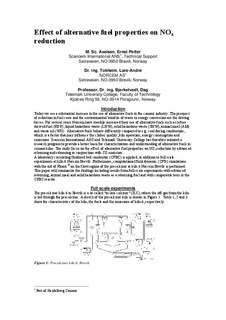Effect of alternative fuel properties on NOx reduction
Conference report
Permanent lenke
http://hdl.handle.net/11250/2438479Utgivelsesdato
2002Metadata
Vis full innførselSamlinger
Originalversjon
Conference object. VDZ-CONGRESS 2002, Process technology and cement manufacturing. Düsseldorf, Sept. 23-27, 2002Sammendrag
Today we see a substantial increase in the use of alternative fuels in the cement industry. The prospect of reduction in fuel costs and the environmental benefits of waste to energy conversion are the driving forces. For several years Norcem have steadily increased their use of alternative fuels such as refuse derived fuel (RDF), liquid hazardous waste (LHW), solid hazardous waste (SHW), animal meal (AM) and waste oil (WO). Alternative fuels behave differently compared to e.g. coal during combustion, which is a factor that may influence the clinker quality, kiln operation, energy consumption and emissions. Scancem International ANS and Telemark University College has therefore initiated a research program to provide a better basis for characterization and understanding of alternative fuels in cement kilns. The study focus on the effect of alternative fuel properties on NOx reduction by advanced reburning and reburning in conjunction with CO emission. A laboratory circulating fluidized bed combustor (CFBC) is applied, in addition to full scale experiments at kiln 6 Norcem Brevik. Furthermore, computational fluid dynamic (CFD) simulations with the aid of Fluent ® on the flow regime of the precalciner at kiln 6 Norcem Brevik is performed. This paper will summarize the findings including results from full-scale experiments with advanced reburning, animal meal and solid hazardous waste as a reburning fuel and with comparable tests in the CFBC reactor.
